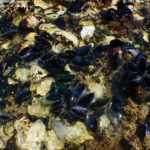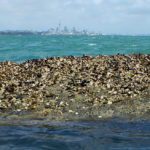I was very pleased to see so many green lipped mussels here. I thought it might be interesting to survey them as there size and abundance are good indicators for how a restored reef might manage this close to Auckland City.

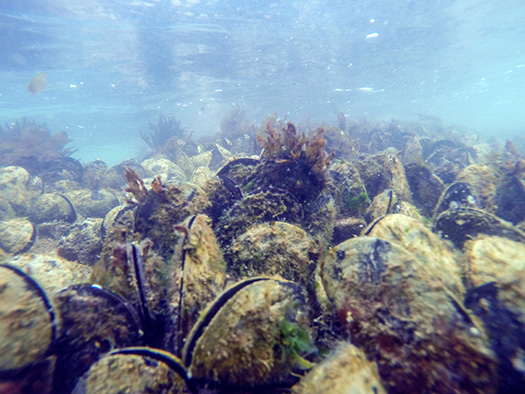
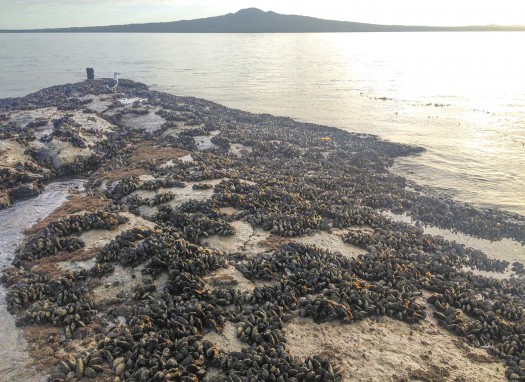
I saw the odd blue mussel, cats eye, kina, eleven arm, cushion star, asian tunicate and fanworm but green lipped mussels were by far the dominant species. There were only a few spots where oysters and barnacles were coming out on top.

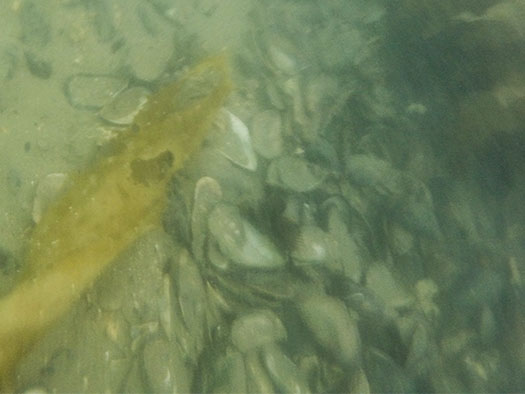
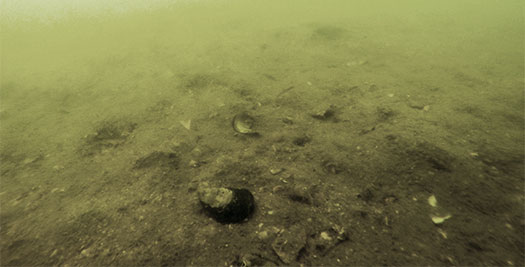



Most mussels were 7-8cm long. But there were a few around the 10cm mark. I think I was looking at two generations?
UPDATE: November 2016
The green lipped mussels have been heavily harvested. There are maybe 20-30 adults left across both reefs. Some juveniles amongst the remaining blue mussels. Rock oysters and blue mussels now the dominant species.
